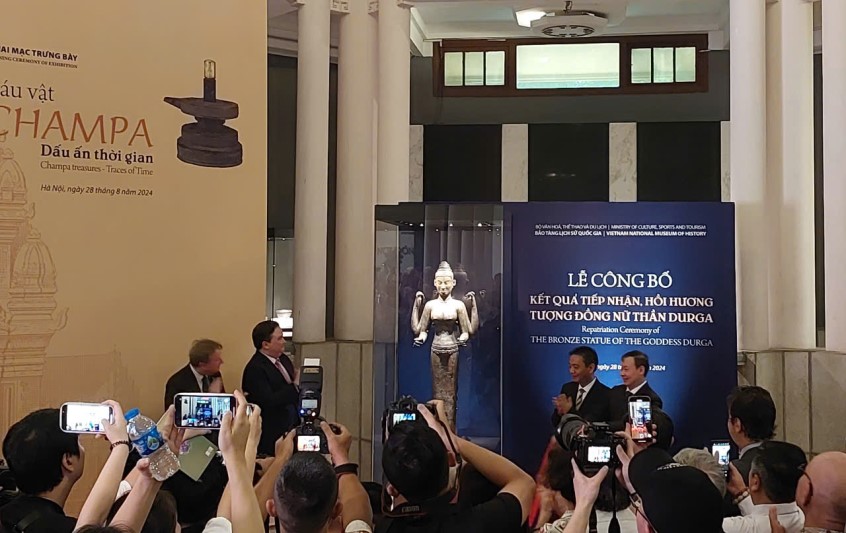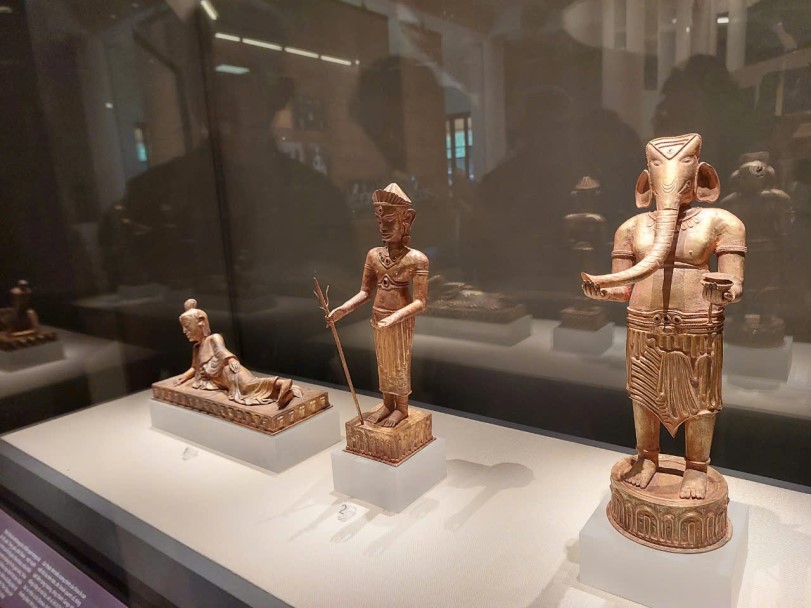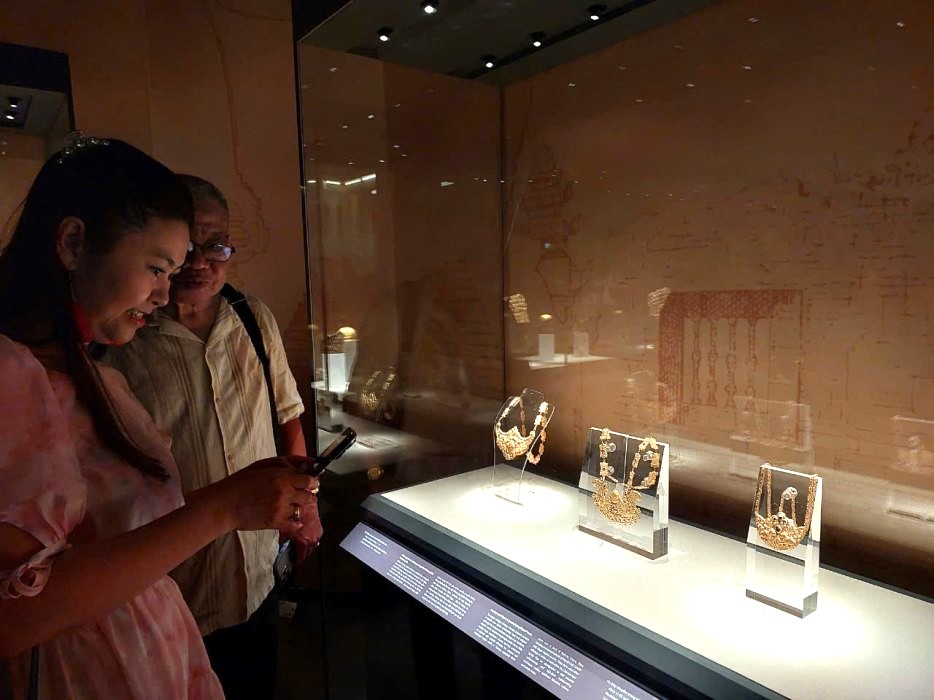For the very first time, the National History Museum has put on display a bronze statue of Goddess Durga that was once trafficked to the US and UK, and is now accessible to the public.
Upon acquiring the statue, the museum, as Dr. Nguyen Van Doan, the museum’s director, shared, established an evaluation council comprising leading experts across history, archaeology, culture, art, and antiquities to assess the statue.
Their verdict? This four-armed Goddess Durga statue, with a substantial mass (total height of 191cm, main part measuring 157cm, and weighing 101kg), dates back to the 7th century and is of Vietnamese origin, embodying the Champa cultural art style. The exact location of its discovery remains a subject for further research.
 |
| The public gets a first glimpse of the four-armed Goddess Durga statue. Photo: Ngo Minh/The Hanoi Times |
“A rare antique, this is the largest bronze statue discovered so far, uniquely representing the Champa cultural art style,” emphasized Doan, “and it holds immense value for Vietnamese culture and fine arts across historical periods.”
The exhibition, titled “Champa Treasures – Marks of Time,” is a collaborative effort between the National Museum of History and collector Dao Danh Duc, showcasing over 60 invaluable gold and silver artifacts crafted in the 17th and 18th centuries, many of which are being unveiled to the public for the first time.
The exhibition is thoughtfully divided into two sections: one dedicated to religious statues and sacred antiquities, and the other showcasing jewelry and objects that blend religious significance with royal authority.
In the first part, visitors are treated to a mesmerizing collection of statues depicting Shiva, Ganesha, Buddha, and Avalokitesvara, as well as sacred linga, yoni, and kosa linga, all crafted from gold and silver and embellished with precious gems.
 |
| The exhibition’s first part showcases a captivating array of statues. Photo: Ngo Minh/The Hanoi Times |
The second section unveils a dazzling array of Champa jewelry and royal artifacts, including earrings, rings, necklaces, hairpins, combs, bracelets, and belts, intricately adorned with symbols rooted in Champa’s religious and traditional beliefs. Hindu deities like Brahma, Vishnu, Shiva, and Ganesha share the spotlight with sacred creatures such as the bull Nandin, the bird Garuda, and the serpent god Naga.
The National Museum of History, through this exhibition, aims to not only showcase the lesser-known historical, cultural, and artistic facets of Champa’s rich heritage but also to deepen understanding and appreciation for this ancient kingdom’s enduring legacy.
Champa, an ancient kingdom that thrived from 192 to 1832, once ruled over central Vietnam, leaving behind a unique cultural legacy shaped by Indian and Javanese influences. Hinduism and Buddhism were the predominant religions, as evidenced by the numerous temple ruins and sculptural remains from that era.
While Champa reached its peak in the 9th and 10th centuries, the kingdom underwent gradual southward shifts and transformative changes after the 15th century. From 1692, when Lord Nguyen established the Thuan Thanh fortress in Champa territory, to 1832, when it was formally conquered by Dai Nam (present-day Vietnam) under Emperor Minh Mang, the historical, cultural, and artistic dimensions of Champa received relatively less scholarly attention.
To address this gap, the Museum of History, in collaboration with the Vietnam Cultural Heritage Association and antique collector Dao Danh Duc, has carefully selected over 60 artifacts from this period, offering visitors a rare glimpse into Champa’s glorious past.
Don’t miss this exhibition, on display at the National History Museum, 1 Trang Tien Street, Hanoi, until the end of October 2024.
 |
| Visitors admiring the exquisite jewelry collection. Photo: Ngo Minh/The Hanoi Times |
Art programme to welcome Lunar New Year’s Eve
NDO – A special art programme, bringing together many renowned and world-class artists from abroad, who are returning to Vietnam for the first time with their families to participate in the Lunar New Year’s Eve programme, which will be officially broadcasted on Vietnam Television (VTV) at 9:15 pm on January 24 (the Lunar New Year’s Eve).
“Japanese Culture Festival” opens in Da Nang city
NDO/VNA – The Da Nang Museum held the “Japanese Culture Festival” 2019 in the central city of Da Nang on March 10 to introduce the beauty of the culture, land and people of Japan to locals and visitors, thus contributing to the strengthening of cultural exchange between the two countries and bilateral friendship.








